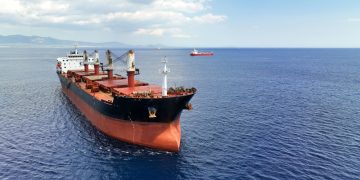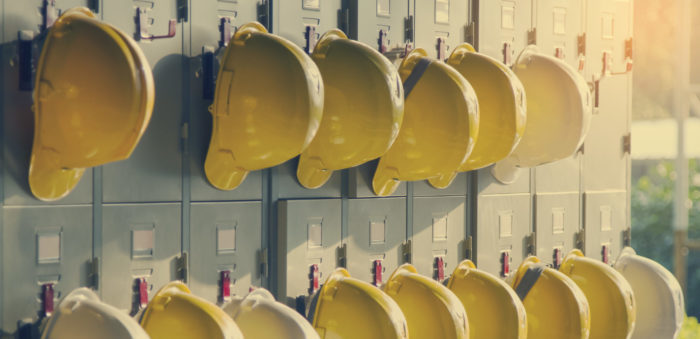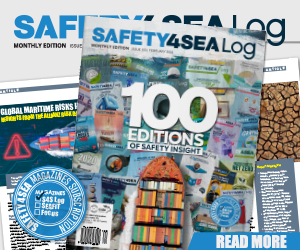Drill Performance onboard ships is the most vital element of a successful emergency response. Drills are required either by legislation or as part of the Company SMS and the time and energy spent across the industry to comply with legislation and ensure a proper response when necessary is huge. Despite all good intentions, the shipboard performance across the majority of the industry (not at the top 10% or 20% of the ships) is substandard; therefore, in this article, we will try to outline the ten basic reasons and explain why this is happening.
#1 An exhaustive/excessive number of drills is required
Besides SOLAS/MARPOL etc. requiring 5-6 basic drills, there is also an excessive number of drills required to be performed due to US or other local legislation, ISPS, Anti Piracy and other SMS requirements bringing the total number in excess of 30 for a Tanker or 25 for a dry bulk carrier. At the same time, given the lack of guidance the majority of the ships are performing these drills one by one making it a nightmare in terms of effort and paperwork. That leads many executive teams onboard ships, having to cope with intense workloads, to select to prioritize other ship tasks ahead of drills. In light of this, in order to fully understand how these drills may be better scheduled and prepared, we need firstly to understand the realities and priorities of those working onboard.
#2 The scenarios exercised are not realistic
The majority of the drills are performed on a schedule basis with e.g. every Saturday at a convenient time a fire/abandon ship drill is performed in full day light in calm seas. However the majority of the emergencies are happening during heavy weather, not necessarily during daylight and in exactly the opposite way that we train our crews. Realistic scenarios need to be provided to properly prepare with a full scale emergency, e.g. heavy weather, hull failure, flooding, personal injury and helicopter operations. Furthermore, real life constraints have to be taken into account as in many parts of the world lifeboat lowering maybe prohibited due to port or terminal restrictions. The need to plan and execute drills in groups (say one large scale drill every quarter) is of paramount importance not only for injecting reality to these emergencies but also for minimizing the burden of disruption of shipboard operations.
#3 Drill performance criteria are not set
In order to properly perform any given task, we need a performance specification as well as description of the roles and responsibilities and expected outcomes. Onboard ships all these items are missing as drills are not properly planned before they are performed, with the exception of fire/abandon where we have a Muster List/Station Bill; however, in all other cases we are missing guidance on who does what. Therefore, it would be nice to introduce Muster List/Station Bills or simple Roles & Responsibilities for each scenario or combined scenario with any role properly described and rehearsed. Furthermore, checklists need to be in place for the preparation, execution and evaluation of each drill with guidance to all involved. As long as we do not analyse what is expected from each crew member, it is inevitable that they will not be able to perform.
#4 Crew responsibilities are not properly set/defined
As said above, not all crew need to participate in all drills and we have to make sure that they know it. Instructions are needed such as security muster list and station bill, and detailed guidance for every scenario such as collision, hull failure, master station bill and so on and so forth, in order the crew to be properly prepared on the roles, responsibilities and expectations before a drill is set. Planning is required with a discussion upfront on what the objective is and what it is expected from all participants. At the end, feedback is vital both onboard and shore to ensure improvements are observed.
#5 Real Life needs are not addressed at the Drill Plan
When we are having real life emergencies, there are many instances that we need to drill in advance; it may be an ECDIS failure, a lack of GPS signal, a malfunction of the ballast water treatment system, an integrated Anti-Piracy Drill with the assistance of an armed team of PMSC, use of citadel, an entrance to a contaminated cargo tank or any other dangerous enclosed space with the use of an emergency escape breathing device for safety maintenance or rescue reasons. It may be anything that has to do with the introduction of new technology or even the real life need to have people forming an enclosed space entry team while speaking the same language. These real life emergencies need to be identified and addressed within the plan to make it worth in the long run.
#6 The way we execute drills is not in line with ship practices
Let’s take the example of the fire drill: SOLAS requires every member of the crew to participate in a fire drill every month but we have several different types of fires with totally different response strategies and tactics as well as areas happening onboard ships, e.g. fire in accommodation, in engine room, in the galley, in the cargo spaces or at the terminal, where we have to co-operate with the shore side. As we are not properly analyzing these real life needs and we don’t properly present/explain the different response scenarios, we cannot expect the crew to properly perform a real life scenario. There are numerous instances were crews have not been able to properly perform, for example, a fire drill in the galley with at the presence of the coast guard. In that respect, we are missing guidance from either industry bodies or company SMS (how often, what, when, where, how etc.) along with a set of best practices to be employed.
#7 Industry is having a paper work approach
To set it straight: Have you done it? Show me the record! In many instances captains are having to face the challenge of keeping the records straight, along with increased workload or heavy weather or other unforeseen operational circumstances; but at the end of the day, 3rd parties (Auditors, Authorities, Inspectors etc.) are always asking for records that showcase if drills are being conducted as required etc.
#8 Paper work upkeeping is a nightmare
The only legislative requirement to have proof of every member of the crew participating in a drill every month comes with SOLAS Fire/Abandon ship requirements. However, the majority of operators have taken it to the other extreme requesting record keeping for all drills and all members of the crew and creating a chaos with respect to record keeping. Now many ship operators are requiring a risk assessment before you conduct a drill, plus a permit to conduct a drill, plus the record keeping requirements for work and rest hours that makes the whole issue a worst nightmare, especially when someone starts checking to identify same timings, signatures, marks from the copy machine etc…
#9 Drill performance is not audited in real life
We haven’t seen the majority of the ship managers and operators auditing real life drills as part of a ship board attendance or as part audit of the ship or even having a 3rd party expert to train the crew, observe and provide immediate and effective feedback with the objective to improve performance. One of the best practices observed across the industry is to video record (even with a smartphone) these trainings to circulate same across the fleet with or without video editing as a real life tool to improve fleet wide.
#10 No KPIs are set to monitor Drill Performance
The industry has failed to identify and implement a set of KPIs to monitor drill performance such as:
- Number or % of drills not performed on scheduled time for any reason
- Number or % of crew not performed properly during a drill
- Number of % of violations of Rest hours due to participation in a drill
- Hours spend per person per month onboard ship to attend drills
The above are just an indication but the lack of introduction identifies that the item is of low priority overall. KPIs may be set on a ship or fleet level or even benchmarked across the industry to enhance improvement in the long run.
All of the above may be, either separately or in combination, form a wall that it is difficult to break; overall, we should be better looking on how the industry as a whole may provide the means for a better shipboard performance while at the same time minimizing the burden placed on Master’s shoulders.
About Apostolos Belokas
 Apostolos is a Maritime Safety, Quality & Environmental Expert, Consultant, Trainer and Project Manager with more than a 20-year background in shipping as Technical, Marine, Safety & Training Superintendent and Consultant. He entered the industry back in early 90’s as Engineering Superintendent with a leading ship manager operating a mixed fleet of bulk and oil/chemical tankers. He then shifted to regulatory compliance and QHSE as superintendent and later as a Consultant and Trainer. Apostolos has successfully completed a wide range of QHSE projects including 250+ management system projects (ISM/ISO 9001-14001-18001/TMSA/MLC), 500 vessel and office audits to various standards and he has trained more than 8,000 people in a wide variety of QHSE subjects. He has also presented and chaired to more than 40 conferences. He holds Mechanical Engineering Bachelor and Master’s specialising in Energy & Environment and Master’s Degree in Maritime Business and Business Administration (MBA), all of them awarded with distinction. Apostolos is the Managing Director of SQE MARINE, SQE ACADEMY and Managing Editor of SAFETY4SEA.
Apostolos is a Maritime Safety, Quality & Environmental Expert, Consultant, Trainer and Project Manager with more than a 20-year background in shipping as Technical, Marine, Safety & Training Superintendent and Consultant. He entered the industry back in early 90’s as Engineering Superintendent with a leading ship manager operating a mixed fleet of bulk and oil/chemical tankers. He then shifted to regulatory compliance and QHSE as superintendent and later as a Consultant and Trainer. Apostolos has successfully completed a wide range of QHSE projects including 250+ management system projects (ISM/ISO 9001-14001-18001/TMSA/MLC), 500 vessel and office audits to various standards and he has trained more than 8,000 people in a wide variety of QHSE subjects. He has also presented and chaired to more than 40 conferences. He holds Mechanical Engineering Bachelor and Master’s specialising in Energy & Environment and Master’s Degree in Maritime Business and Business Administration (MBA), all of them awarded with distinction. Apostolos is the Managing Director of SQE MARINE, SQE ACADEMY and Managing Editor of SAFETY4SEA.


































































